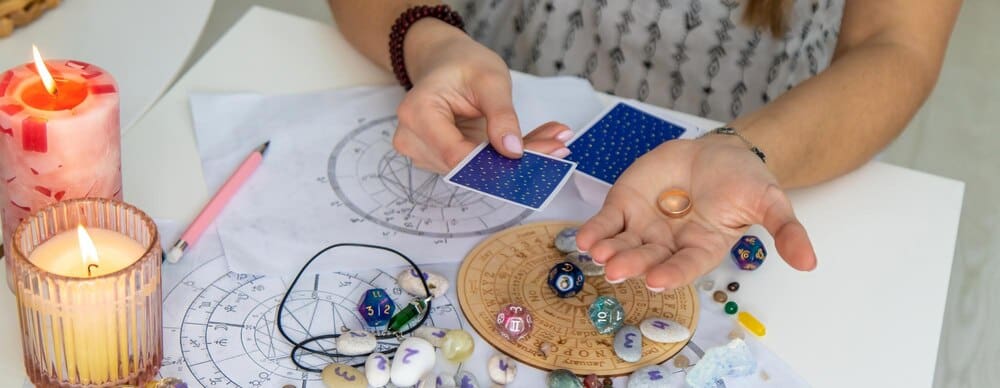The Saptamsa, or D7 chart, stands as one of the most vital and revealing divisional charts in Vedic Astrology, offering a microscopic view into the realm of children, creativity, and legacy. For anyone seeking to understand their potential for parenthood, the nature of their relationship with their offspring, or the power of their own creative life force, the D7 chart provides the critical details. It is derived by dividing each zodiac sign into seven equal parts, creating a new horoscope that specifically maps out the destiny connected to the 5th house—the house of progeny and creative self-expression. By analyzing the planets and houses within this specialized chart, an astrologer can uncover the promise of children, the timing of their arrival, their general disposition, and the joy or challenges they may bring into the native’s life.
Understanding the Divisional Charts (Vargas)
Vedic Astrology, or Jyotish, utilizes a sophisticated system of sixteen primary divisional charts known as Vargas. While the main birth chart, the Rashi chart (D1), provides a broad overview of a person’s life, the Vargas act like astrological microscopes, each one “zooming in” on a specific area of life with incredible precision.
The Rashi chart is the foundational map of the heavens at the moment of your birth. However, the experiences of wealth, career, marriage, and children are far too complex to be fully contained within that single map. The divisional charts reveal the hidden strength and nuanced destiny of the planets, showing how they will truly function in different spheres of your existence.
The Saptamsa (D7) is the seventh of these divisional charts and is inextricably linked to the 5th house of the Rashi chart. The 5th house governs children, intellect, creativity, romance, and speculation. The D7 chart, therefore, is the ultimate tool for dissecting these themes, particularly progeny and creative manifestation.
The Mathematical Basis of the D7
The creation of the Saptamsa chart is a precise mathematical process. Each of the twelve zodiac signs spans 30 degrees. To calculate the D7, each sign is divided into seven equal portions, with each portion measuring approximately 4 degrees, 17 minutes, and 8 seconds of arc.
When a planet is located in one of these seven portions in the main Rashi (D1) chart, it is assigned to a new sign in the D7 chart based on a specific counting rule. For planets in odd signs (Aries, Gemini, Leo, etc.), the counting begins from the sign itself. For planets in even signs (Taurus, Cancer, Virgo, etc.), the counting begins from the seventh sign from it.
This calculation is done for the Ascendant (Lagna) and all nine planets, which then populate a brand-new chart—the Saptamsa. This new chart has its own Ascendant, houses, and planetary placements, which must be interpreted to understand the native’s destiny regarding children and creativity.
The Core Significations of the Saptamsa
The D7 chart is a rich tapestry of information, primarily focused on two interconnected themes: the creation of new life through children and the creation of new ideas through personal talent and expression.
Children and Progeny
The most common use of the D7 chart is to analyze all matters related to children. It offers profound insights that the D1 chart alone cannot provide. It can reveal the potential for having children, potential delays or difficulties, the number and gender of children, their health, and the nature of the relationship you will share with them.
The D7 Lagna (Ascendant) and its lord are paramount. Their condition reveals your overall experience and capacity for parenthood. A strong D7 Lagna lord, well-placed in a benefic house (like a Kendra or Trikona), suggests happiness and fulfillment from children. Conversely, if the D7 Lagna lord is weak, afflicted by malefics, or placed in a challenging house (like the 6th, 8th, or 12th), it can indicate struggles, worries, or a difficult relationship with one’s offspring.
The 5th house of the D7 chart is the “house of children” within the “chart of children,” making it a focal point for analyzing the first child. The 7th house (third from the 5th) is often seen for the second child, the 9th house for the third, and so on, by counting every alternate house.
Creativity and Manifestation
The creative impulse is fundamentally linked to the procreative one. Both involve bringing something new into the world that is an extension of oneself. The Saptamsa chart is therefore also the map of your creative potential and your ability to manifest your ideas into tangible reality.
This includes artistic talents, writing abilities, innovative projects, and any endeavor where you pour your personal energy into creating something unique. A strong D7 chart can indicate a person who is not only fertile with ideas but also has the cosmic support to bring them to fruition.
Planets like Venus (art, beauty), Mercury (writing, communication), and the Moon (imagination) become especially important in the D7 for assessing creative talent. Their strength and placement show where your creative gifts lie and how easily you can express them.
How to Analyze the Saptamsa Chart
Analyzing the D7 is a systematic process that must always begin with the main Rashi chart. A divisional chart can only elaborate on a promise that already exists; it cannot create a new one.
Step 1: The Promise in the Rashi Chart (D1)
First, assess the potential for children and creativity in the D1 chart. Examine the 5th house, the condition of its ruling planet, and any planets located within it. Most importantly, analyze the placement and strength of Jupiter (Guru), the natural significator (karaka) for children, wisdom, and expansion.
If the 5th house, its lord, and Jupiter are all strong and well-supported in the D1, the promise is strong. If they are weak or afflicted, challenges are indicated. This initial assessment provides the context for the D7 analysis.
Step 2: The Saptamsa Lagna and its Lord
Next, turn to the D7 chart itself. The D7 Lagna and its lord represent your personal connection to the matters of this chart. A well-placed D7 Lagna lord indicates that you will experience the affairs of children and creativity with ease and grace. If it is afflicted, you may feel a sense of struggle or dissatisfaction in these areas, even if you do have children or creative success.
Step 3: The 5th House of the Saptamsa
The 5th house of the D7 and its lord are the next critical focal points. They provide specific details about your children, particularly the first one. Benefic planets here suggest a child who is a source of joy and pride. Malefic planets like Saturn, Mars, Rahu, or Ketu can indicate challenges related to the child’s health, behavior, or your relationship with them.
Step 4: The Role of Jupiter and Venus
Within the D7 chart, Jupiter’s placement is doubly important. As the natural Putrakaraka (significator of children), its strength here confirms blessings related to progeny. A well-placed Jupiter in the D7 is one of the strongest indicators of happiness from children.
Venus also plays a key role, representing the seed (sperm and ovum) and the creative fluid. Its condition in the D7 speaks to fertility and the sheer pleasure and beauty derived from one’s creations, both biological and artistic.
Step 5: Dasha and Transits
A promise in the chart, no matter how strong, only manifests when the time is right. This timing is revealed by the Dasha (planetary period) system and transits. Childbirth or a major creative breakthrough often occurs during the Dasha or Bhukti (sub-period) of planets that are strongly associated with the D7 chart—such as the D7 Lagna lord, the 5th lord of the D7, or a planet powerfully placed in the D7 chart.
Simultaneously, the transits of major planets like Jupiter and Saturn over key points in both the D1 and D7 charts will provide the final trigger for the event to occur.
Interpreting Planetary Placements in the D7
Each planet brings its unique energy to the Saptamsa chart, coloring the experience of children and creativity:
- Sun: Indicates pride in one’s children. The child may possess leadership qualities or a strong personality. Creatively, it points to performance and public recognition.
- Moon: Signifies a deep, emotional, and nurturing bond with children. Creativity is expressed through imagination and emotional connection.
- Mars: Suggests energetic, courageous, and sometimes argumentative children. It can indicate medical interventions during childbirth, like a C-section. Creatively, it points to drive and ambition.
- Mercury: Points to intelligent, communicative, and skillful children. It favors creative pursuits involving writing, speaking, or crafts.
- Jupiter: This is the ultimate blessing in a D7 chart. It indicates wise, fortunate, and righteous children who bring immense joy. It is a sign of divine grace in matters of progeny.
- Venus: Suggests beautiful, charming, and artistic children. It is a strong indicator of talent in the fine arts, music, or design.
- Saturn: Often indicates delays, obstacles, or a limited number of children. The relationship with children may be based on duty and responsibility rather than overt affection. The children may be mature, serious, or born later in life.
- Rahu & Ketu: These karmic nodes bring unconventional elements. They can signify adoption, children from different cultural backgrounds, or unusual circumstances around birth. They also point to a deep, karmic bond and can indicate highly unique or genius-level creative talents.
Working with a Challenging Saptamsa Chart
An afflicted D7 chart is not a final verdict but rather an indication of karmic patterns that require conscious effort and spiritual remedies to overcome. If you face challenges in this area, Vedic wisdom offers several paths for healing and appeasement.
Strengthening the key planets of your D7 chart through mantras is a powerful remedy. Chanting the mantra for a weak D7 Lagna lord or an afflicted Jupiter can help mitigate negative influences. For example, the mantra “Om Gurave Namaha” for Jupiter or worshipping Santan Gopal (the child form of Krishna) is highly recommended for those seeking children.
Acts of selfless service (seva) related to children are also incredibly effective. Donating to orphanages, volunteering at schools, or helping care for the children of friends and family can help balance difficult planetary energies. Furthermore, if progeny is delayed, channeling that potent creative energy into other outlets—like art, business, or community projects—can provide a fulfilling alternative path for manifestation, easing the cosmic pressure.
Ultimately, the Saptamsa chart is a profound tool for self-discovery. It maps our journey of creation, whether through the birth of a child or the birth of an idea. It reveals the divine blueprint for our legacy, offering clarity, guidance, and wisdom for one of the most significant and deeply human areas of our lives.








